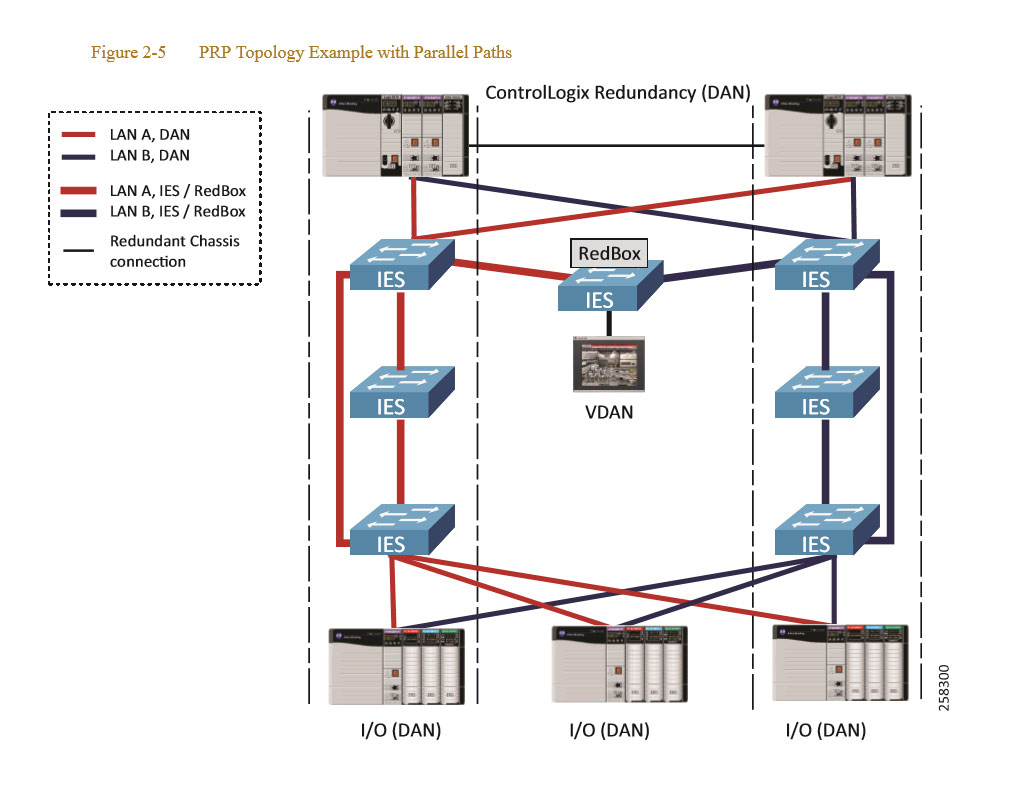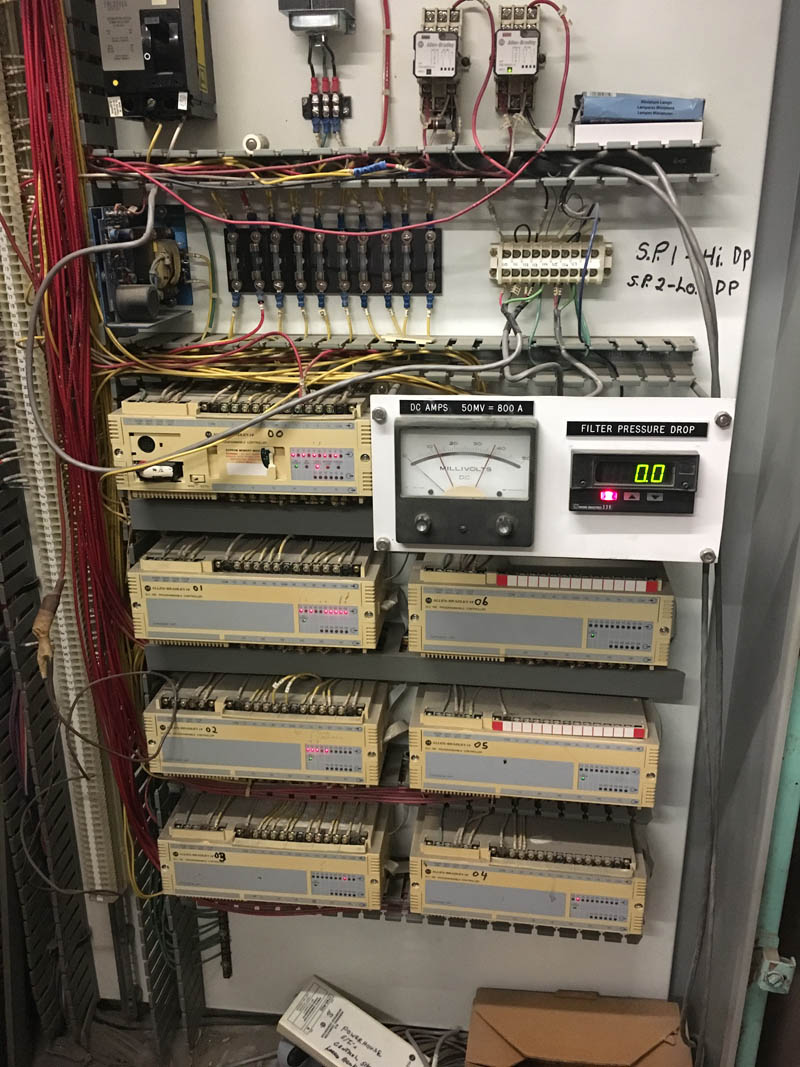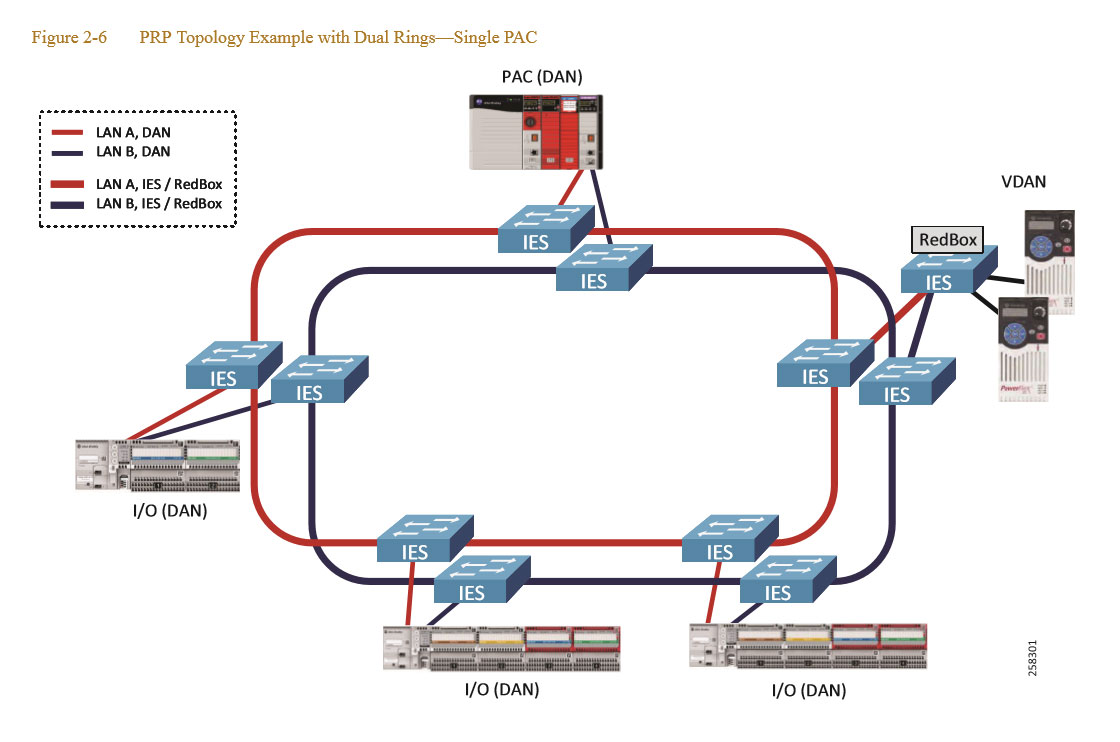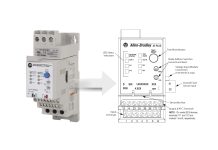
Parallel Redundancy Protocol (PRP) is a standard defined in IEC 62439-3 and is adopted in the ODVA, Inc. EtherNet /IP specification, and is used to create network redundancy by allowing PRP enabled devices to send duplicate Ethernet frames over two independent Local Area Networks (LANs).
The beauty of this architecture is that PRP devices send and receive duplicate frames from both networks and discard the frame that was received last, so when failure on one LAN occurs, there is zero recovery time.
Image by Brandon Cooper
This is different from other resiliency protocols such as Device Level Ring or Spanning Tree that must reconfigure after a fault.
Rockwell Automation, working with Cisco and Panduit have designed, tested and approved network scenarios to provide a network solution for OT networks that is scalable and provides high availability and uptime potential.
As legacy communication protocols such as Data Highway or ControlNet give way to EtherNet protocols, the demand for robust networks has grown tremendously over the last couple of decades.
The number of connected devices will only continue to increase as we progress into the future of Industrial Automation Control Systems.
PRP Network Components
- LAN A & LAN B – Redundant, active EtherNet networks that operate in parallel and provide fault independence
- DAN – Double Attached Node – This is an IACS device that contains PRP technology and connects to both LAN A and LAN B. This device sends and receives duplicate EtherNet frames on both ports. Devices that are DANs can be a 1756-EN2TP (ControlLogix EtherNet Module) or a 5094-AENTR (Flex 5000 I/O Module)
- SAN – Single Attached Node – This is an IACS device that does not contain PRP technology and can only connect to LAN A or LAN B. SAN devices can ignore the PRP trailer on the end of the PRP EtherNet frames.
- Redbox – Redundancy Box – This is an industrial EtherNet Switch with PRP technology that connects Non-PRP IACS devices or a Non-PRP part of the network to both LAN A and LAN B. The Stratix model 5400 (one PRP channel) or 5410 (two PRP channels) can be used as a Redbox switch by setting two Gigabit ports as a PRP channel. The lowered number port connects to LAN A and the higher numbered port connects to LAN B.
- VDAN – Virtual Double Attached Node – This is an IACS device that does not contain PRP technology, but connects to both LAN A and LAN B through a Redbox, gives the device redundancy and appears to other nodes on the network as a DAN.
- Infrastructure Switches – Switches in LAN A & LAN B that are not configured as a Redbox. This can be any managed Stratix switch
PRP Network Topology
- Parallel Paths – Industrial EtherNet Switches can be implemented in a fashion where they are linked together in a “daisy-chained” fashion with LAN A and LAN B operating physically separate, independent networks.
- Dual Rings – Industrial EtherNet Switches can be implemented similar to a DLR configuration, but with two independent rings.
- Star – Industrial EtherNet Switches can be implemented in a star configuration, with two IES switches at each location, on the separate LAN A and LAN B networks.

 Figure 2-5 from enet-td021_-en-p.pdf
Figure 2-5 from enet-td021_-en-p.pdf
Figure 2-6 from enet-td021_-en-p.pdf
PRP Network Monitoring
Redundant networks can provide wonderful potential for high availability and uptime, but an important piece of the puzzle is monitoring of your network.
Using a network monitoring tool that uses Simple Network Management Protocol (SNMP), EtherNet/IP diagnostic tools and the diagnostics in PRP capable devices, you can keep an eye on your network for potential problems.
If you don’t, failure can occur and you will never know it. In fact, multiple failures could occur and it would not be evident by the performance of the network.
Monitoring your network and repairing failures when they occur is the key to making this type of network run at 100% uptime for many years to come.
References:
Conclusion
Hopefully, this very brief overview will give you some insight as to what PRP is, the terminology and even the available topologies that are used in this redundant network configuration.
In many cases a DLR configuration or even a single network configuration is adequate for an OT application, but in an application where guaranteed uptime is needed, then this might just be what we have been looking for.
Written by Brandon Cooper
Senior Controls Engineer and Freelance Writer
Have a question? Join our community of pros to take part in the discussion! You'll also find all of our automation courses at TheAutomationSchool.com.
Sponsor and Advertise: Get your product or service in front of our 75K followers while also supporting independent automation journalism by sponsoring or advertising with us! Learn more in our Media Guide here, or contact us using this form.
- Things I’ve Learned Travelling for Work (2) - July 17, 2025
- Things I’ve Learned Travelling for Work (1) - July 10, 2025
- Emulating an Allen-Bradley E3 or E3 Plus - June 30, 2025

Discover more from The Automation Blog
Subscribe to get the latest posts sent to your email.






